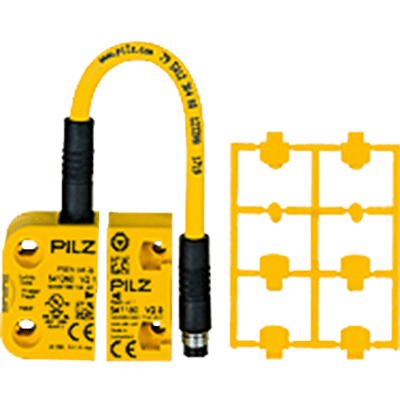What Is a Safety Switch?

Safety switches, also called safety switches, are installed at locations where safety must be ensured, such as machine tool doors and safety fences. A door opening while the machine tool is in motion could lead to serious injury. Therefore, safety switches are necessary to distinguish between machine operation and machine standstill and to ensure that the door opens only when the machine is stopped. There are two types of safety switches: a locking type with a locking mechanism and a non-contact type.
Uses of Safety Switches
Safety switches are mainly used as interlocking devices that do not allow the operation or startup of equipment in an unsecured state. Furthermore, if you want to lock a door or safety fence so that it will not open while the equipment is in operation, select one with a locking function.
Examples of common uses include the following:
- Machine Tool Safety: Various machine tools are hazardous because they involve high-speed rotation, and chips and other debris can fly off during machining. For this reason, these devices are installed on the doors of machining centers to ensure operators’ safety. This prevents the doors from opening unless the machine comes to a complete stop since many processing machines do not stop immediately after machining is completed but coast for a certain period. No one should be able to enter the machine until it completely stops.
- Safety Around Multi-Axis Robot Arms: Multi-axis robot arms are used in the assembly processes of manufacturing lines in various fields. However, to ensure safety, workers moving in the area must take caution not to be caught in the robot’s arms. Therefore, installing a safety fence around the movable area of the robot arm and a safety switch at the opening/closing part of the fence can ensure safety. This is done as the robot will not start unless the operator steps outside the safety fence and closes the door.
In addition, the safety switch may also be used to ensure the safety of the equipment itself rather than simply for human safety applications. Especially in production lines where multiple robot arms operate in tandem, there is a possibility that the robot arms will come into contact with each other and be damaged if they start operating at an unexpected time. Therefore, it is necessary to configure the equipment to ensure safe operation with the same configuration as above.
Principle of Safety Switches
There are two main types of safety switches: those with a locking function and those with a non-contact function. The mechanism and features of each are described below.
- Locking Type: Generally, the internal structure has a locking mechanism based on the relationship between a “cam” and a “rod.” By moving the “cam” and the “rod,” the locking state will switch in response to the opening or closing of the door. The two main locking methods are as follows:
- Spring Lock Method: Since the locking is done by spring force, the mechanical locking state can be maintained even when the power is disconnected. This makes it suitable for securing safety from objects that cannot be stopped immediately by inertia.
- Solenoid Lock Method: Since the lock is performed by the force of a solenoid, the lock releases at the same time the power is cut. Therefore, this method is suitable for securing equipment safety that can stop immediately after the power is disconnected.
- Non-Contact Type: Non-contact type safety switches are used in locations where you must prevent dust and debris. With the locking type, there is a possibility of generating dust and other debris due to wear, but with the non-contact type, there is no need to worry about this. The primary detection methods include magnetic detection and electromagnetic induction. Because of these features, they are suitable for use in clean rooms and food production lines.